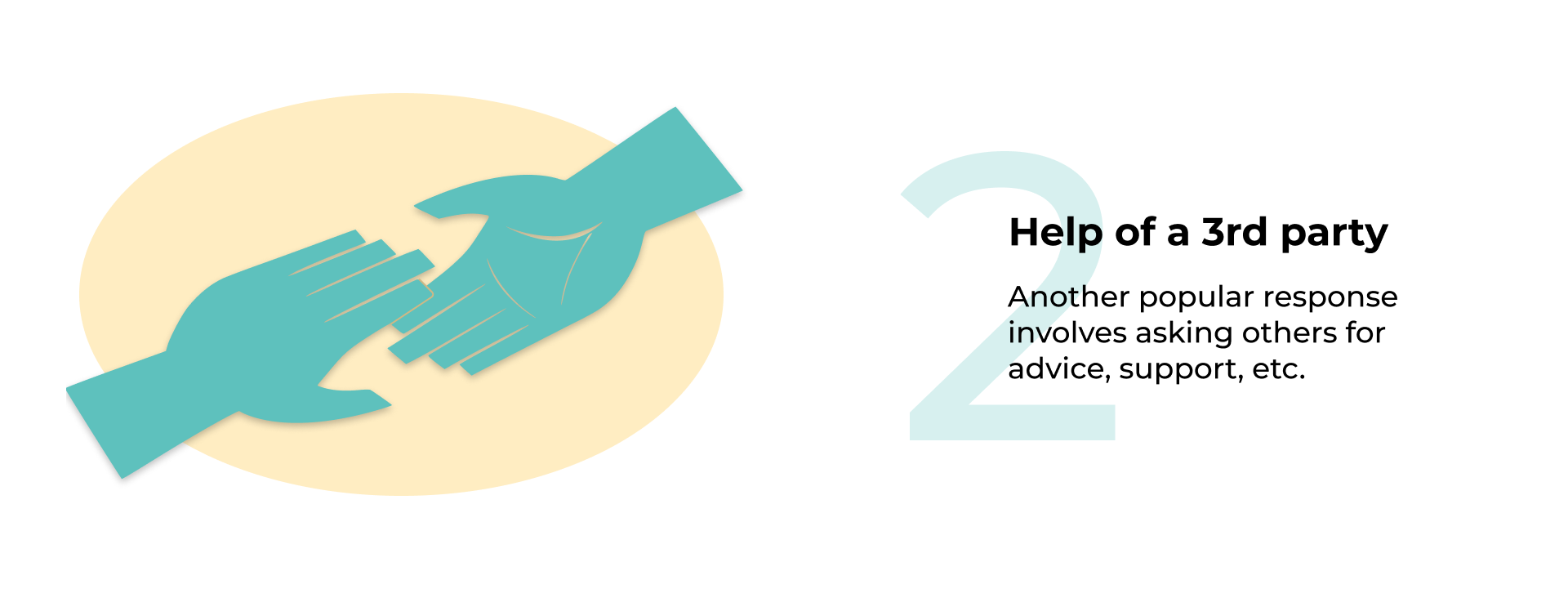Timeframe:
Ongoing
UX Researcher and Designer
Role:
Team Members:
Joel Vasquez, Katherine Velasquez, Suejin Yang
Help People approach difficult conversations with loved ones in a healthier way
CHALLENGE
While talking about our own journeys with mental health in relation to our upbringings, our team realized we had something in common: we’d grown up in environments where having opposing views on serious and important topics (i.e. mental health, politics, etc.) always felt like an uphill battle. Difficult conversations are things people deal with more often than not, so that left us wondering – how can we make these conversations more constructive rather than destructive?
Difficult conversations aren’t easy, but they are necessary
PROJECT GOAL
To achieve this goal, we payed attention to three main areas throughout this project: behaviors and motivations, current conversations, and bridging the gap.
Current conversations have room for improvement
SURVEYS
To understand people’s attitudes when discussing differences in opinion, we sent out surveys to collect our first round of data. From this, we learned the following:
USER INTERVIEWS
Communication issues arise on both sides of the conversation
Looking to dive deeper into data gathered from our survey responses, we decided to conduct user interviews to learn what exactly makes a conversation “difficult,” how people currently approach them, and what they would like to improve.
The competition focuses on providing PAID SERVICES rather than resources
COMPETITIVE AND COMPARATIVE ANALYSIS
Since difficult conversations can be straining on mental health, we decided to analyze popular apps surrounding mental wellness to see how they tackle a problem like this. We found that paid services had a prominent roll in the space and that almost none of these apps provided an open collection of resources without a subscription/membership.
USER PERSONA
Olivia needs a better way to facilitate productive communication with her aunt because she feels that her aunt is not receptive to opposing perspectives.
IDEATION SESSION
To ideate solutions for this problem, we asked our ideation session participants the following questions:
How might we help facilitate conversations based on mutual respect and understanding?
How might we help Olivia reframe polarizing conversations?
How might we help Olivia stay level-headed and keep conversations from becoming too personal?
Set backs and a new direction for providing resources
DESIGN
Straight out of our ideation session, our team thought the best way to teach communications skills would be by providing short lessons on topics. After some initial sketches and a design studio, we began to realize the complexity of this. Who would create the lessons? How would lessons be updated? Is there potential for lesson bias? After creating a pros and cons list, we ultimately decided to pivot in favor of a collection of resources rather than lessons.
A (relatively) intuitive flow
USER TESTING
To test how intuitive our design is for users, we conducted usability tests for 3 flows: bookmarking a resource, finding your bookmarks, and posting a question.
NEXT STEPS
An indefinite hiatus
While more research, testing, and iterating could be done, our team made the decision to put this project on an indefinite hiatus due to circumstances at the time. That being said, during our final design sessions, we developed our high-fidelity prototype's first iteration. Should we decide to pick up on this project again, some next steps would be to continue testing and iterating, polish and finalize resource lists, and adapt our mobile-first design for the web.
















